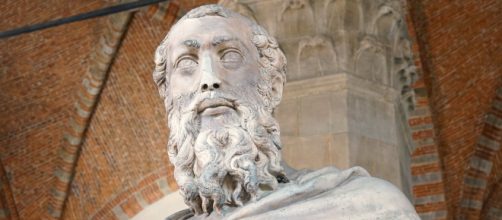If you’re an artist living in the glow of Da Vinci, Raphael and Michelangelo, your name could get lost in the glare.
That’s how Francesco Caglioti, curator at the Bargello National Museum, sees the reputation of Renaissance sculptor Donatello – in the shadows of the big three. To remedy the situation, he mounted a one-man 130-item show of the artist’s work.
As Caglioti told Artnet, getting overshadowed doesn’t mean Donatello is less praiseworthy: “It’s simply due to the fact that he was a sculptor and not a painter…Donatello is the best sculptor, perhaps, who has ever existed.”
Caglioti says he bases his opinion on a 30-year study of Donatello.
Contending that history doesn’t give the sculptor the credit he deserves, he sees him as “a father of the Renaissance. We have to change our perspective on art history.”
Are you sure about that?
Why does this curator, who is an art history professor at the Scuola Normale Superiore di Pisa, believe that Donatello lacked acclaim? According to Renaissance historian Giorgio Vasari, when Donatello died, his city of Florence "was plunged into mourning."
In fact, Donatello was more popular in the art world of Florence than was Da Vinci, who was thought a dilettante owing to his habit of seldom finishing anything.
In his account of Donatello’s celebrity, Vasari attributed it to the sculptor’s ability to convey states of mind.
For instance, Michelangelo thought that the sculptor’s statue of St. Mark is so full of feeling that he said if St Mark were as good as he looked in the statue, anyone would believe in what he preached.
There’s still more evidence of Donatello’s high standing even in our own time. You may remember last year when I reported a news story headlined, “Sculpture held higher than Michelangelo's heading to Palazzo Strozzi in Florence.”
The sculpture held higher than Michelangelo was by the very artist that Caglioti said was not held in high esteem.
The Palazzo Strozzi director, Arturo Galansino said, “Michelangelo, Raphael, Leonardo, they all looked to Donatello.”
I’m also thinking of England’s art historian Sister Wendy’s 1998 “Book of Meditations.” She singled out the sculpture called Magdalene, “who came to love Christ after a life of selfishness”, grieving forever after.
Donatello portrayed her in old age in a fragile wooden carving abraded to the bone by sadness.
What, then, can possibly explain Caglioti’s mistaken belief that Donatello’s work, and even all Renaissance sculptures, are valued less than paintings by historians? There’s just no basis for this belief.
Opinions are not facts
Can it be that Caglioti is thinking of the negative things Da Vinci said about sculpture in his many notebooks: “I am content to pronounce between painting and sculpture; saying that painting is the more beautiful and the more imaginative and the more copious, while sculpture is the more durable but it has nothing else.”
Who pays attention to a painter pontificate about sculpture? Apples and oranges.


